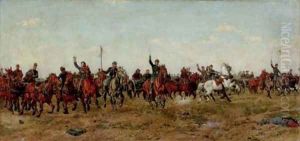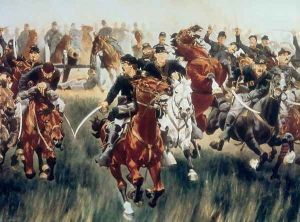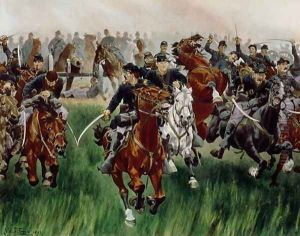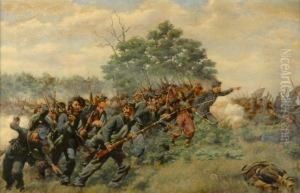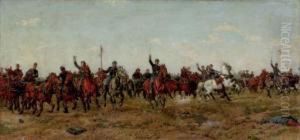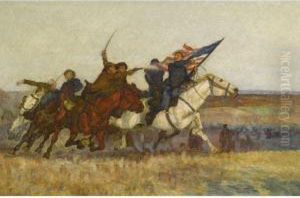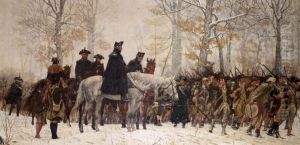W.T. Trego Paintings
William T. Trego was an American painter known for his highly detailed works depicting military scenes. Born on September 15, 1858, in Yardley, Pennsylvania, Trego faced significant physical challenges from an early age due to a neuromuscular condition that severely limited the use of his hands and legs. Despite these obstacles, he demonstrated a remarkable aptitude for art.
Trego's father, Jonathan Kirkbridge Trego, was an artist and teacher who recognized his son's talent and provided him with his initial training. To pursue his passion formally, Trego attended the Pennsylvania Academy of the Fine Arts in Philadelphia, where he studied under the tutelage of Thomas Eakins, a renowned realist painter. Eakins's influence is evident in Trego's attention to anatomical accuracy and his interest in capturing the human form in motion.
Throughout his career, Trego specialized in historical and military subjects, often depicting dramatic scenes from the American Revolution and the Civil War. His work is characterized by its meticulous detail, dynamic compositions, and the vivid portrayal of the hardships of war. One of his most famous paintings, 'The March to Valley Forge, December 19, 1777,' completed in 1883, is a prime example of his narrative style and his ability to convey emotion through the depiction of weary soldiers.
Despite his disability, Trego adapted his painting technique to work around his physical limitations. He used a system of straps and devices to control his brushes and palette, allowing him to create his works with a high degree of precision. His determination to overcome adversity and his dedication to his craft earned him recognition during his lifetime, although he did not achieve significant financial success.
William T. Trego's life was one of resilience and perseverance in the face of significant challenges. His legacy as an artist is preserved through his paintings, which can be found in several institutions and collections, including the Pennsylvania Academy of the Fine Arts and the Mercer Museum in Doylestown, Pennsylvania. Trego's commitment to his art continued until his death on June 24, 1909, in North Wales, Pennsylvania. His works remain a testament to his skill and his passion for capturing the spirit of American history.
